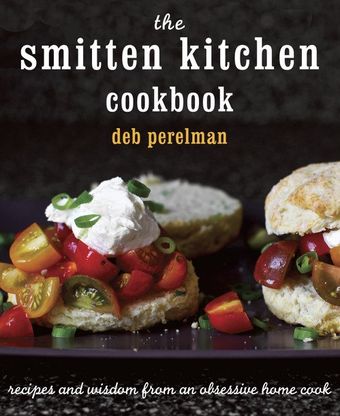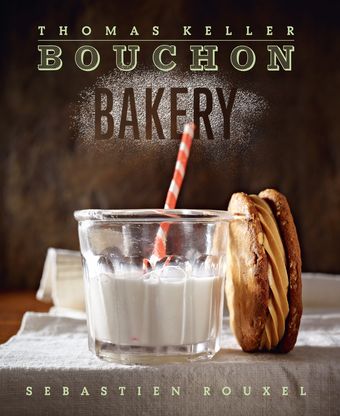Our family treasures our home cookbook collection. We tend to turn to and thumb through most of those books not so much as precise manuals for executing dishes, but rather as inspiration for ideas of how we might prepare whatever ingredients we’ve gathered from the Greenmarket or wherever we’ve shopped. We refer most frequently to books whose recipes fit the way our family loves to eat, or those offering techniques to improve how we already cook – and sometimes we turn to those with ideas, photos, and prose that just put us in the mood to cook. With the exception of dessert, bread, and pastry cookbooks, rarely do we follow recipes to the T. In the same way I am nearly incapable of reading a speech, I’m just as ill-at-ease when cooking from a recipe exactly as it is written.
But improvising my way through these two fine books wouldn’t be fair to the authors or to Food52’s readers. And so I enlisted the help of Dan Dilworth, a gifted cook who has worked in the kitchens of USHG places like Gramercy Tavern, Gramercy Terrace, and Union Square Events. The goal was for Dan’s step-by-step execution of these recipes to shed more light on the merits of the books than would my free-wheeling approach.
How it worked: I selected 3 to 4 recipes from each book and Dan cooked them verbatim. I observed his process, sampled the results, and noted the reactions of my official panel of tasters (read: me plus 4 other hungry family members.) I’ll start by saying that each book does exactly what it sets out to do – and either one would find (and will find) an accessible lower-shelf placement in our cookbook collection.
The Smitten Kitchen Cookbook is far and away the more casual and approachable of the two books. It will never find a place on your coffee table, and nor does it aspire to be anywhere beyond your kitchen. It is chock-full of the kinds of easy-to-throw-together, winning ideas that any reasonably skilled and confident home cook could execute. Overall, this is the kind of soulful, simple food that I love to eat. Deb Perelman’s “if it sounds good together, then cook it” approach to recipe writing makes everything sound tempting. You feel confident and at ease when you know that the recipes were developed in the tiny Manhattan kitchen that is her workspace. Ingredients are often measured in pinches of sugar and grinds of the pepper mill -- and sometimes not at all. Her relative imprecision is fine by me in terms of how I normally use cookbooks: instinctually, naturally, and personally.
But if you’re playing by the notes, then following her sometimes imprecise directions precisely can, in some cases, produce varying results. Savory dishes tended to lack that something extra to make them stand up and sing (salt, pepper, lemon, or some other form of acid) and if judged purely on the basis of whether the recipes cooked as written produce incredible results, I’d pause before recommending this book.
Mustard Milanese with Arugula Fennel Salad was the stuff of a solid weeknight dinner -- tasty and simple, yet also innovative (and a drop healthier) as the dredging liquid used egg whites instead of whole eggs. It just lacked moisture and zing, which was easy enough to correct on the spot by drizzling lemon and olive oil atop. Zucchini Ribbons with Almond Pesto is another compelling and easy idea, and this time, the problem was too much garlic -- which couldn’t be removed from the dish once we’d made it. Despite using the smallest clove of garlic we had, it was too garlicky by at least half a clove.
One Smitten Kitchen dish was spectacular as written: the Grapefruit Olive Oil Pound Cake was quick, straightforward, and ethereally good. I would gladly eat it for breakfast and dessert on a regular basis, and in fact, I can’t wait to make it again. Perelman’s tone, as she walks you through each recipe, is flexible, lenient, reassuring, and hospitable. She is there at your side, urging you on, wanting you to feel good about yourself while cooking her food. Out of panko? Ms. Perelman has a recipe for faking it with white bread.
Thomas Keller and Sebastien Rouxel’s Bouchon Bakery is, in many ways, the other side of the coin. Consistent with every stunning restaurant Keller has ever opened or cookbook he has ever written, this is a gorgeous and incredibly ambitious work, awe-inspiring in its painstaking attention to detail. Where Ms. Perelman calls for black pepper -- amount unspecified -- the team at Bouchon writes recipes that stipulate using 1/8th + 1/16th teaspoons. We don’t have a 1/16th teaspoon measure at home, and so we found ourselves concerned that a micro mistake might torpedo the results. Many recipes call for highly specific tools and instruments that the average home cook may have a tough time finding at their local kitchen store, let alone in their home kitchen. We don’t have, for example, any half-sphere silicone molds or 3-inch tart molds in our kitchen, and so we’d probably pass on taking a shot at those kinds of recipes.
Ultra-precise instructions can be exactly what a cook wants when baking, and so for many, Bouchon Bakery will be a godsend. And of the four recipes we cooked, the results, when produced according to exact instructions, ranged from good to breathtaking. The Gougères were very good, and something I could imagine preparing for guests on a home-entertaining occasion calling for Champagne. Bouchon Bakery’s exceptional Chocolate Chunk and Chip Cookies produced “best ever” reactions from just about all of our official tasters. They were that good. But making them was also such a serious undertaking that the experience will likely inspire my whole family to make more trips to Bouchon Bakery to buy them for $2.95 each (an incomparable value now that we know what it takes to bake them) rather than returning to this time- and labor-intensive recipe. Still, the ideas are brilliant: using molasses as a stand-in for vanilla extract, for example, and increasing the number of chocolate chips. These are ideas that’ll stick with us as we bake any new batch, Bouchon or Toll House alike. The Lemon Meringue Tarts were gorgeous to behold, and while they would impress anyone at a dinner party, the process involved cooking four different recipes over the course of nearly two days, and after all that effort, tasters found them a drop too sweet.
So where are we in the match between The Smitten Kitchen Cookbook and Bouchon Bakery? The books are so utterly different with such completely separate aspirations (by and large achieved) that it is almost ludicrous to select a winner. The question rests far more on whether you are a precisionist or an improviser. Whether you have scads of time on your hands, or not. Whether you prefer to play by sheet music or by ear.
Our experience with Bouchon Bakery’s recipes was this: a meticulous and highly arduous process most often leading to a pot of gold at the end of the rainbow. The results induce a sense of accomplishment not unlike what I remember feeling as a kid after constructing a complicated model airplane or completing a 2000-piece jigsaw puzzle: “I did it!” (And I never need to do it again.)
In the case of The Smitten Kitchen Cookbook, outcomes were more varied -- and with the exception of that stunningly good Grapefruit Olive Oil Pound Cake (I’d buy the book for that recipe alone), the book is more of a compendium of winning ideas for the home cook than it is a professional guide to creating perfect endings.
In my real life, I would never select a winner between such different books. But a commitment is a commitment, and that’s what I made to the Piglet. My selection comes down to: what do we need more in our home cookbook collection, near perfect desserts or fresh ideas? We are privileged to be surrounded by incredible bakeries and pastry shops (including, happily, Bouchon Bakery itself) and so when the question becomes “of these two books, which will you turn to and use over and over?” or, “if you could only have one of these books, which would it be?” my pick for the Piglet is The Smitten Kitchen Cookbook.



13 Comments
All praise the Piglet.